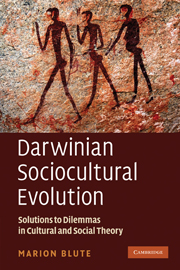Density-dependent natural selection may have implications for the coming decline side of the COVID-19 pandemic
Chapter 3 of Darwinian Sociocultural Evolution on “Necessity: why did it evolve” discussed principles of evolutionary ecology, notably density dependence relative to resources in section 3.3.1., and applied them illustratively to the sociology of science. Subsequently Blute (2016) reviewed the history of, and greatly extended the theory. The extensions included its applicability to selection in space and/or time, to somatic functions as a cause and not just an effect (as in Fisher’s sex allocation theory for example), and to selection within and between, not just growing populations, but also declining ones. These may have implications for the coming declining side of the COVID-19 pandemic.
Where/when density measured in cost per capita relative to resources is low within a population, or in growing populations with a history of catastrophes, natural selection favours spending on consumption (eating and excreting) whereas where/when it is high or in declining ones with a history of bonanzas, selection favours investing in digestion (breaking down and building up). What should be built up? In a homogeneous environment it is mechanisms of social interaction whether cooperative, antagonistic or a mixture of both but in a patchy environment it is mechanisms of dispersal in time (maintenance), in space (motility), and/or in niche (mutability) – the 3 M’s. Similarly, low density measured in frequency or in growing populations with a history of catastrophes, natural selection favours production (many small offspring) whereas high densities or in declining ones with a history of bonanzas, selection favours “reproduction” (fewer larger offspring, ones capable of social interaction or their own 3M’s).
Both these somatic and reproductive distinctions are quantity versus quality ones with the former in each case depleting and degrading the external environment while the latter depletes and degrades the internal environment. As well, the former in each case is associated with a small size because of the disproportionate surface to volume ratio there and the latter of each associated with a large size because of the disproportionate volume to surface ratio there. Under the simplest set of conditions if both somatic and reproductive functions utilize the same or positively correlated resources and the two functions interact synergistically, then at low densities the more one consumes the more one can produce and vice-versa whereas at high densities the more one digests the more one can reproduce and vice-versa.
What then of COVID-19? Our culture is coevolving in interaction with their genes (gene-culture or culture-gene coevolution, between species in this case) and our culture has evolved favouring social distancing etc. in some places – depleting viral resources and causing a levelling off and decline in the viral population(s). But our culture is now on the edge of reversing itself at least somewhat. What are the implications of that for the virus? Given that surely humans are a heterogeneous environment, selection on the viruses should then favour:
i) maintenance: those which live longer (e.g. making the recovered or infected but symptom free contagious for longer)
ii) motility: those which move further (e.g. placing themselves in small droplets which disperse further rather than just in large drops which tend to fall) and/or
iii) mutability: those which increase their blind mutation rate seeking a new niche (e.g. infecting organs other than respiratory systems such as kidneys, nervous systems etc.)
It is at least possible therefore that changes in their genes and not just in our culture will in the future be contributing to one or more further spikes in the pandemic until a vaccine is widely available or until the 70 or 80% infection rate required for herd immunity is reached.
Blute, Marion. 2016. “Density-dependent selection revisited: Mechanisms linking explanantia and explananda.” Biological Theory 11(2) 113-121.


Leave a comment